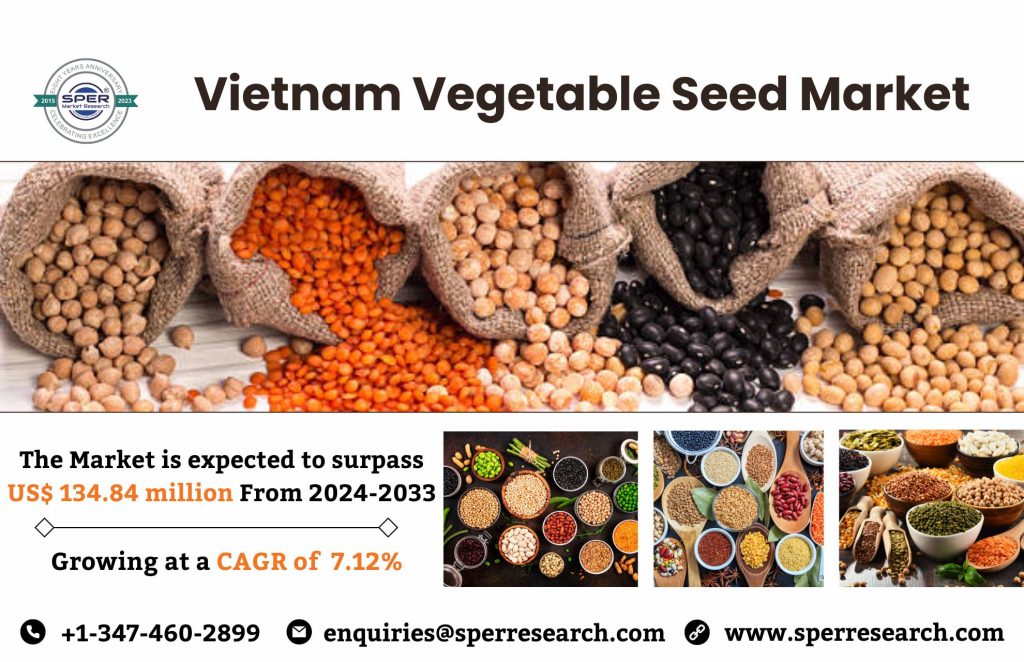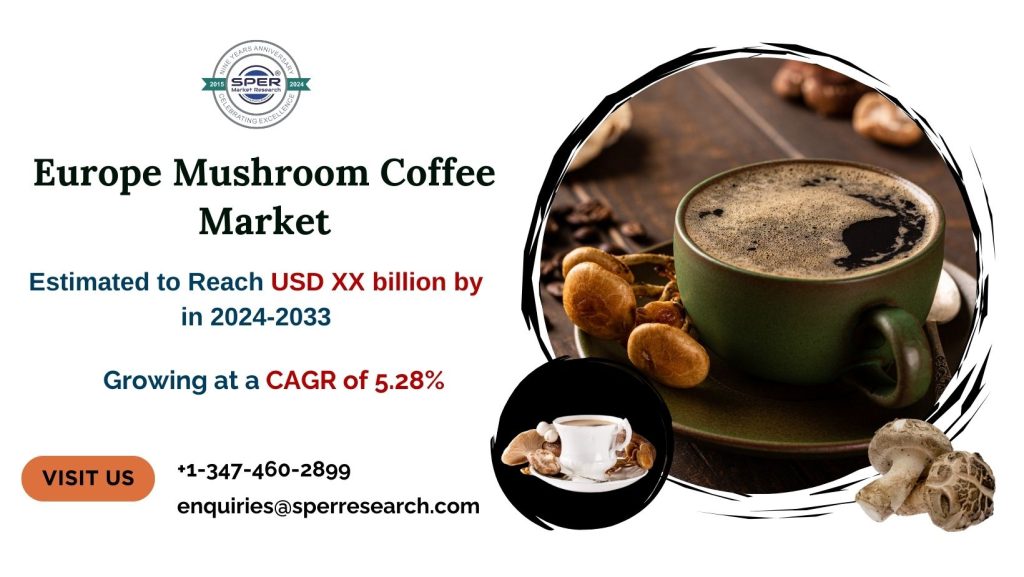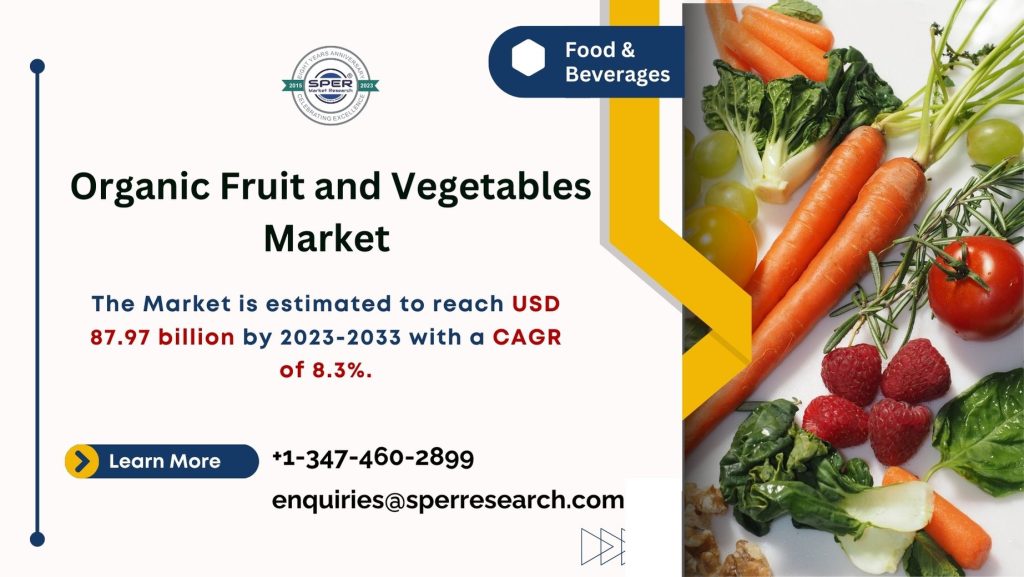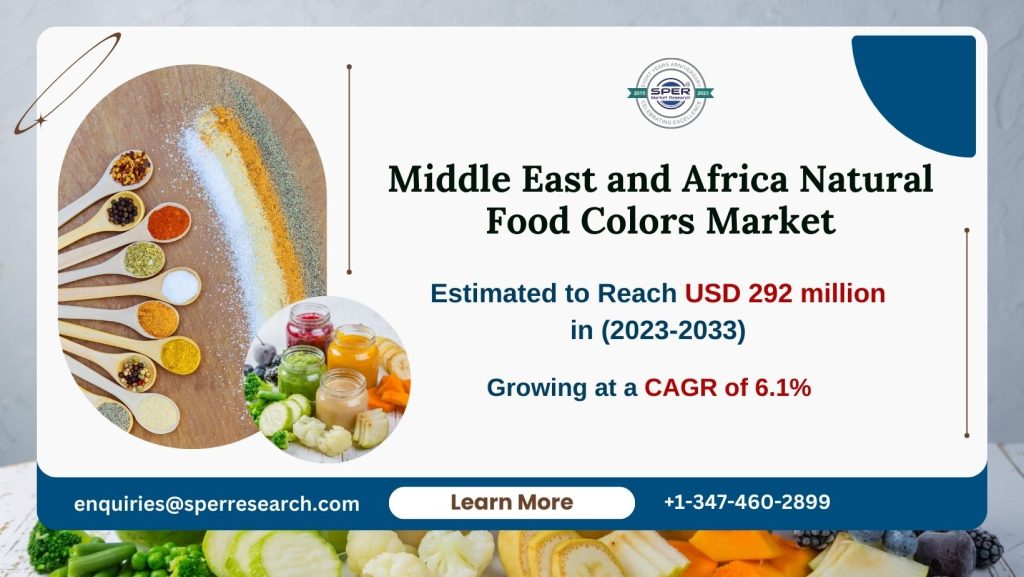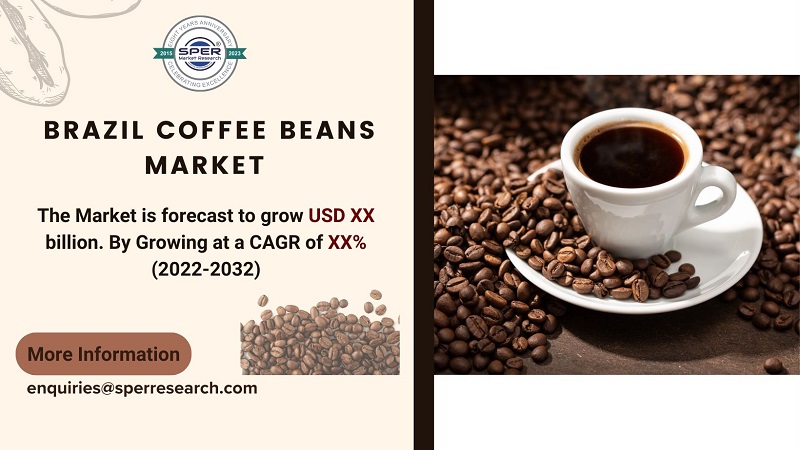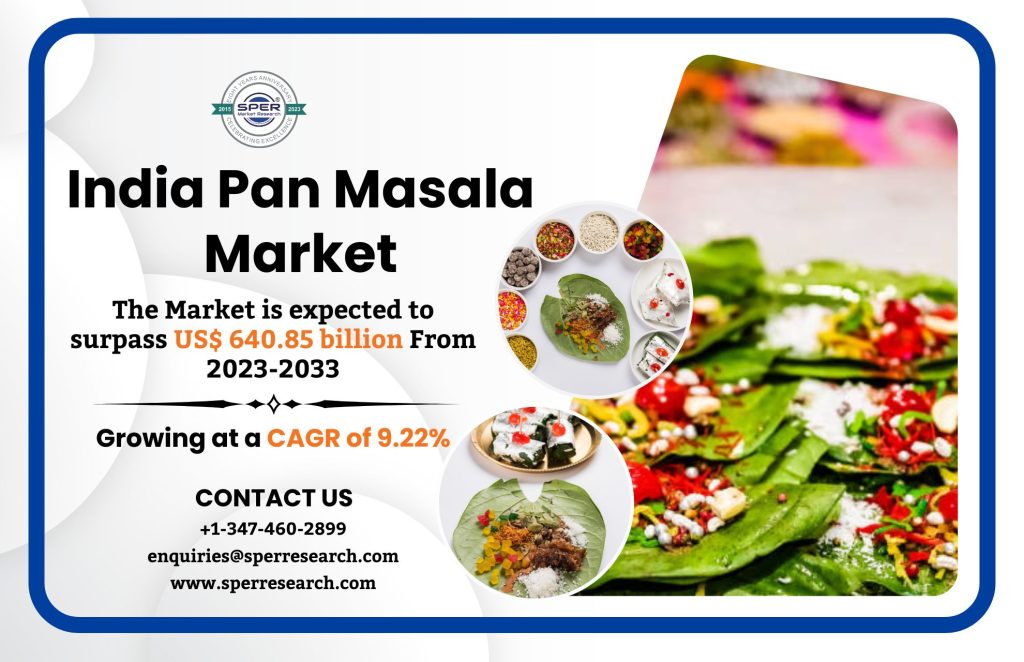Vegetable seeds are the fundamental units of plant reproduction, producing a wide range of edible plants such as vegetables, herbs, and legumes. They are specifically designed to grow plants with edible and nutritious parts, such as leaves, roots, stems, flowers, and fruits, which are commonly consumed as the primary source of nourishment in human diets. They come in a variety of shapes, sizes, colours, and textures, demonstrating the wide diversity of veggies they can produce. Each seed contains genetic information that impacts the plant’s characteristics such as flavour, size, colour, disease resistance, and growth patterns. Growing vegetable seeds is an important element of agriculture since it establishes the foundation for long-term food supply.
According to SPER Market Research, ‘Vietnam Vegetable Seed Market Size – By Breeding Technology, By Cultivation Mechanism, By Crop Family – Regional Outlook, Competitive Strategies and Segment Forecast to 2033’ states that the Vietnam Vegetable Seed Market is estimated to reach USD 134.84 million by 2033 with a CAGR of 7.12%.
Drivers: The Vietnam vegetable seed industry is being driven primarily by the increasing demand for high-quality, high-yielding vegetable seeds. Pressure on the country’s agriculture sector to fulfil the population’s growing food demands has led to the adoption of improved seed varieties. Hybrid seeds in particular have grown in popularity because to their superior traits, which include better climate adaptation, disease resistance, and enhanced yield. Farmers are encouraged to invest in premium seeds since they significantly boost agricultural productivity and profitability. Furthermore, the Vietnam government has taken the lead in promoting sustainable agricultural practices through a variety of initiatives and laws. Initiatives to improve seed quality, subsidise hybrid seeds, and provide farmers with access to innovative farming techniques have all helped the vegetable seed market.
For further details and in-depth insights, download our no-cost free sample of the report – https://www.sperresearch.com/report-store/vietnam-vegetable-seed-market.aspx?sample=1
Restraints: There are numerous obstacles facing the Vietnam vegetable seed industry that could hinder its expansion. Lack of high-quality seeds is one of the main obstacles, particularly in isolated and rural areas. Even while improved and hybrid seed varieties are growing in popularity, there are still problems with their availability and distribution. Traditional seed-saving methods are still widely used by smallholder farmers, often leading to lower yields and more vulnerability to pests and illnesses. The pricey cost of hybrid seeds is another significant barrier. Compared to regular seeds, these seeds initially cost more, despite having many benefits. Due of their limited financial resources, small-scale farmers may be hindered by this pricing disparity.
The Covid-19 outbreak has had both beneficial and negative effects on the Vietnam vegetable seed industry. On the one hand, the pandemic’s increased concern on diet and health has driven up demand for vegetables and vegetable seeds. Fresh vegetable consumption has increased as customers become more mindful of their dietary choices. As a result, seed companies now have an opportunity to supply the growing demand. However, the pandemic has had an impact on the vegetable seed market as well. Labour shortages, travel restrictions, and supply chain interruptions have all had an influence on seed production and delivery. Vegetable production has temporarily diminished due to farmers’ difficulty procuring seeds.
The southern region of Vietnam, specifically the Mekong Delta, has the largest market for vegetable seeds. This region is well-known for its substantial agricultural operations and ideal growing conditions for vegetables. Major market participants include Bayer AG, Bejo Zaden BV, DCM Shriram Ltd (Bioseed), East-West Seed, Enza Zaden, Groupe Limagrain, Known You Seed Co. Ltd., and others.
Key Target Audience:
- Seed Distributors and Retailers
- Government Bodies and Policymakers
- Research and Academic Institutions
- Agricultural Extension Services
- Agrochemical and Fertilizer Companies
- Nurseries and Greenhouses
- Agricultural Consultants
- Food Processing Companies
- Exporters and Importers of Seeds
- Non-Governmental Organizations (NGOs) and Environmental Groups
Vietnam Vegetable Seed Market Segments:
By Breeding Technology:
- Hybrids
- Open Pollinated Varieties and Hybrid Derivatives
By Cultivation Mechanism:
- Open Field
- Protected Cultivation
By Crop Family:
- Brassicas
- Cabbage
- Carrot
- Cauliflower and Broccoli
- Cucurbits
- Cucumber and Gherkin
- Pumpkin and Squash
- Roots and Bulbs
- Garlic
- Onion
- Potato
- Others
- Solanaceae
- Chilli
- Eggplant
- Tomato
- Unclassified Vegetables
- Asparagus
- Spinach
- Others
For More Information, refer to below link –
Vietnam Fruit and Vegetable Seeds Market Share
Related Report –
Follow Us –
LinkedIn | Instagram | Facebook | Twitter
Contact Us:
Sara Lopes, Business Consultant – U.S.A.
SPER Market Research
+1-347-460-2899
